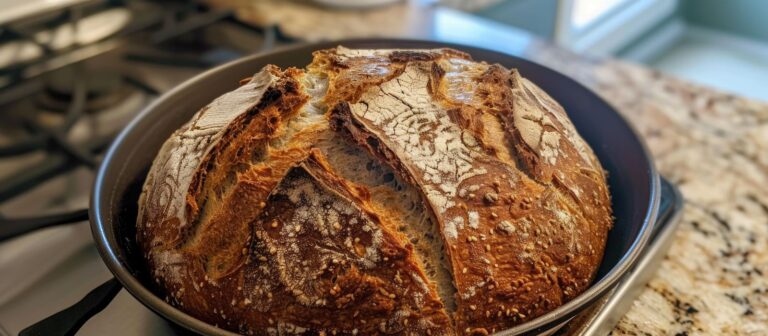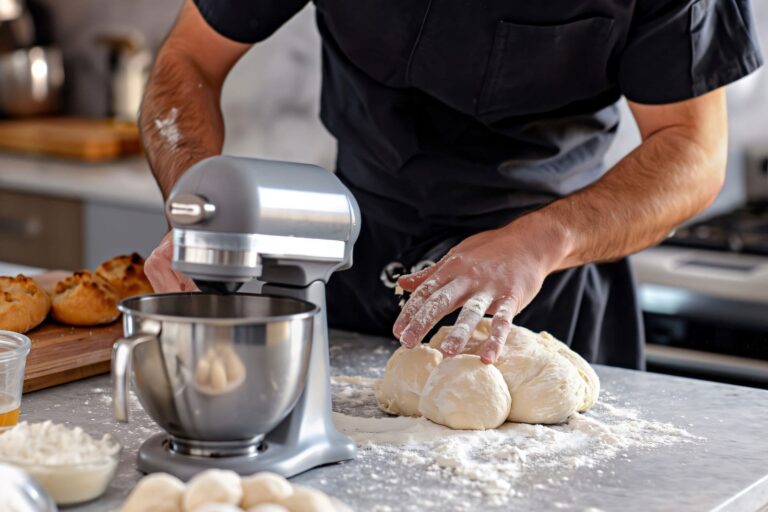As an Amazon Associate I earn from qualifying purchases.
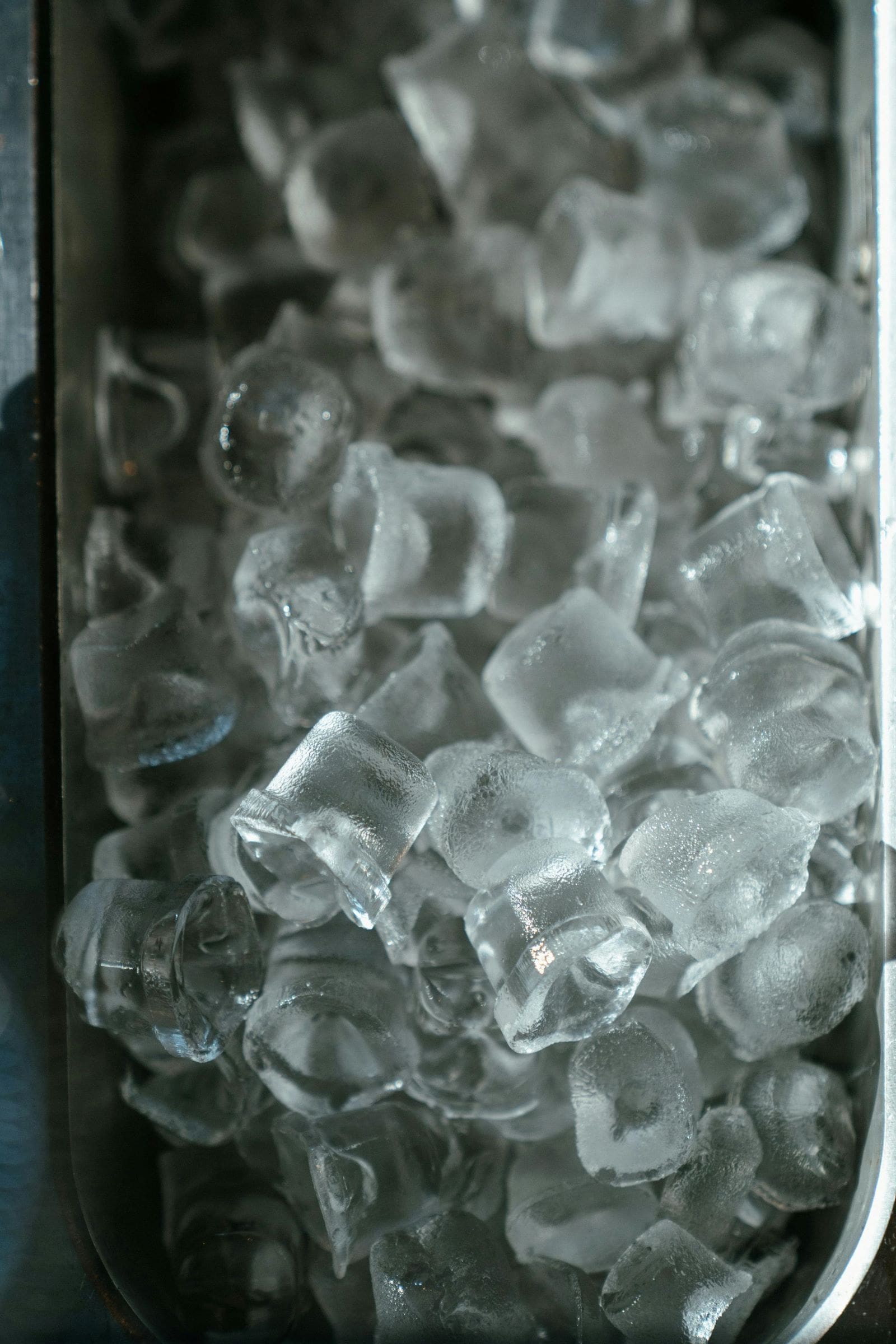
Many of us use glass containers in the kitchen for storing food, beverages, and leftovers. But what about freezing? Can you put glass in the freezer without worrying about it breaking or cracking?
This is a question that has sparked curiosity and concern among many. In this article, we will explore the details of glass in the freezer, answering all your questions and providing useful tips for safe storage.
The Basics of Freezing and Glass
Freezing is a popular method for preserving food and beverages. Many people use glass containers to store their items in the freezer. But before you toss that glass jar or bottle in, you might wonder: Can you put glass in the freezer?
While the answer is yes, there’s more to it than simply placing any glass container into a freezing environment. Understanding the relationship between freezing and glass materials is crucial to avoiding potential mishaps like cracks or breakage.
Freezing and Glass: What Happens?
When glass is exposed to freezing temperatures, it contracts. This is a natural response to the cold environment. However, glass doesn’t expand or contract in the same way other materials do. Unlike flexible materials, glass is rigid and doesn’t easily adjust to temperature changes. So, what happens when you put glass into a very cold environment like a freezer?
If the glass is subjected to sudden temperature shifts, such as when a warm container is placed into a cold freezer, the glass may break due to the stress from thermal shock. This is why it’s crucial to take care when freezing glass items.
The Risks of Thermal Shock
One of the main risks when freezing glass is thermal shock. Thermal shock occurs when an object is exposed to a rapid change in temperature, which causes the material to expand or contract unevenly.
In the case of glass, this can lead to cracks or even shattering. Can you put glass in the freezer without worrying about thermal shock? Not entirely. Even tempered glass, while more resilient, isn’t immune to the effects of thermal shock if not handled properly.
Factors Affecting Glass in the Freezer
Not all glass behaves the same way under freezing conditions. The type of glass you use can significantly impact how well it handles freezing. For instance, tempered glass and borosilicate glass are more resistant to temperature fluctuations.
On the other hand, regular soda-lime glass is more prone to cracking when subjected to extreme cold. Understanding these factors can help ensure you use glass containers that are safe for freezer use.
Can You Put Glass in the Freezer and Expect It to Last?
While it’s possible to put glass in the freezer, you can’t expect it to last indefinitely without taking precautions. If you’re planning on storing glass containers in the freezer, it’s important to use ones designed to handle low temperatures.
This minimizes the chances of the glass breaking due to freezing temperatures. So, while you might be able to safely freeze a glass container, always consider its type and the method you use for storing it.
Using Glass Storage Containers for Meal Preparation
Glass storage containers are an excellent tool for meal prep! They allow you to portion meals ahead of time, ensuring you eat healthy and save time during the week. Here’s how you can make the most of them:
- Batch Cooking: Prepare large quantities of your favorite meals and divide them into individual servings using glass containers.
- Layered Salads: Use tall glass containers to create layered salads. Start with dressings at the bottom, add sturdy vegetables, grains, proteins, and finish with greens at the top.
- Microwave and Oven Convenience: Glass containers can go directly from the fridge to the microwave or oven (if freezer-safe), making reheating meals straightforward.
Types of Glass Suitable for Freezing
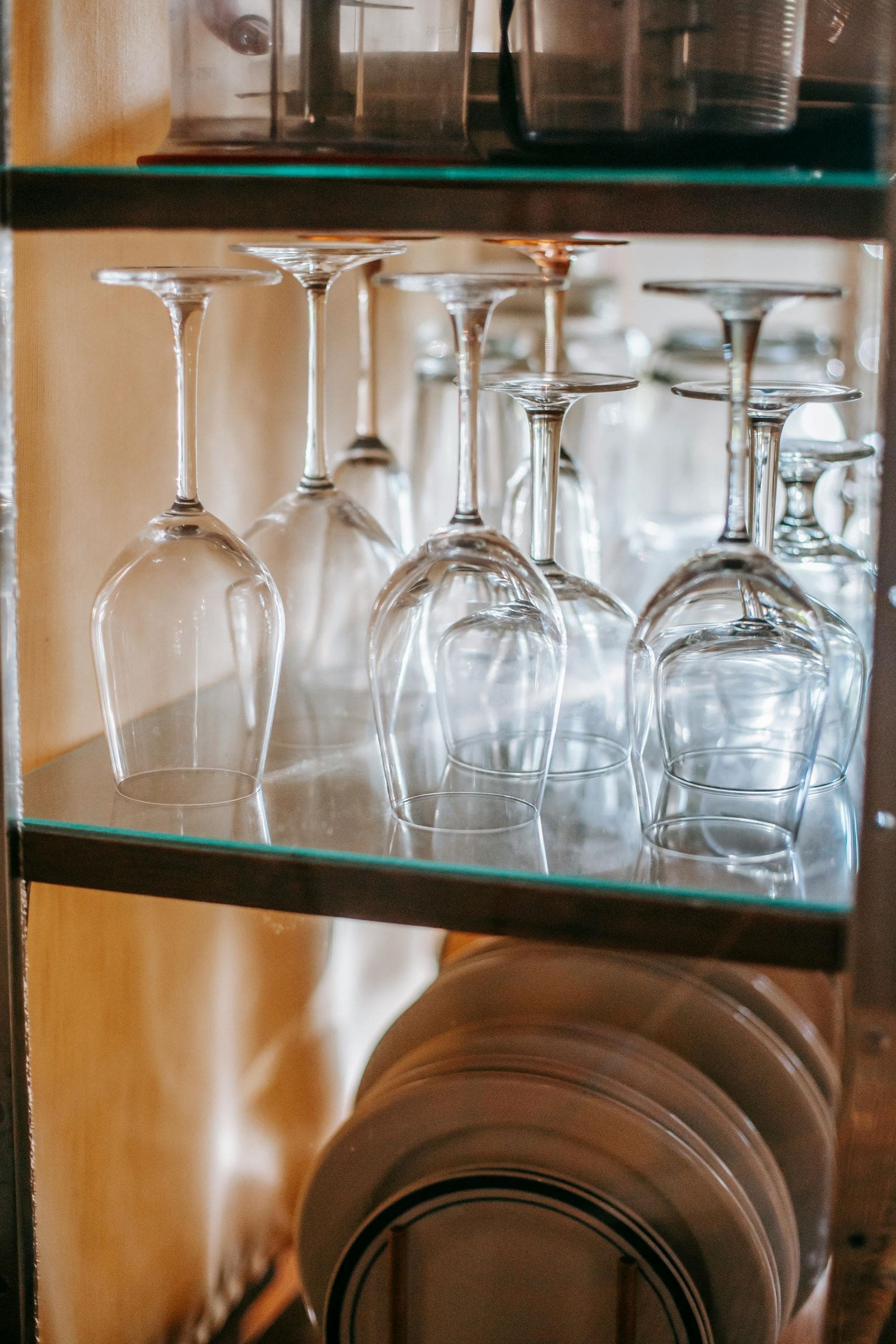
Not all glass is suitable for freezing. In fact, certain types of glass are far more resilient to the extreme temperatures found in a freezer. If you’re wondering, “Can you put glass in the freezer?” the answer largely depends on the kind of glass you’re using.
Some glass types are better equipped to handle the freezing process, while others may shatter due to thermal shock. Here’s a closer look at the different types of glass and their suitability for freezer storage.
Tempered Glass: Strong and Resilient
Tempered glass is one of the most durable types of glass available. It’s specially treated through a heating and cooling process that increases its strength.
This makes it far more resistant to breakage when exposed to extreme temperatures, such as those found in a freezer. So, can you put glass in the freezer with confidence? Yes, tempered glass is one of the safest choices.
The strength of tempered glass is due to its ability to distribute stress evenly across its surface. This means it can handle sudden temperature changes better than standard glass. Containers made from tempered glass are less likely to crack or break when frozen, making them a reliable option for long-term storage in your freezer.
Borosilicate Glass: Built for Extreme Temperatures
Another type of glass that works well in the freezer is borosilicate glass. This type of glass contains boron trioxide, which provides extra resistance to temperature changes. It is often used in laboratory settings because it can withstand both extreme heat and cold without cracking. If you’re still asking, “Can you put glass in the freezer?” borosilicate glass is one of the best choices for freezing foods.
Borosilicate glass is ideal for freezing liquids like soups, stews, or sauces. The material’s ability to resist thermal shock makes it a great option for a variety of freezing applications. If you want to store food for extended periods, borosilicate glass containers are a solid choice.
Soda-Lime Glass: The Everyday Glass
Soda-lime glass is the most common type of glass used in everyday containers, like drinking glasses or standard jars. While it’s fine for regular use around the house, soda-lime glass isn’t the best option for freezing. The main issue with soda-lime glass is its sensitivity to thermal shock. So, can you put glass in the freezer if it’s made of soda-lime? It’s not advisable.
Soda-lime glass may crack or shatter when subjected to freezing temperatures, especially if the glass is exposed to rapid temperature changes. While it can handle a brief stint in the freezer, it’s best not to use it for long-term storage. Opt for more freezer-friendly types of glass if you plan to store items for a while.
Glass with Decorative Features: Handle with Care
Some glass containers are designed for decorative purposes and may not be suitable for the freezer. These containers often have thinner walls or intricate designs that make them more fragile.
When considering whether you can put glass in the freezer, avoid using decorative glassware unless it’s specifically labeled for freezer use. Thin or fragile glass can break easily, leading to both a mess and potential danger.
If you’re uncertain about whether a decorative glass container is safe for freezing, it’s best to err on the side of caution. Always check the manufacturer’s instructions to ensure that the glass is designed for extreme temperature use.
The Risks of Freezing Glass

Freezing glass may seem like a simple solution for long-term storage, but it comes with several risks. If you’re wondering, “Can you put glass in the freezer?” it’s important to be aware of the potential dangers involved.
Freezing glass improperly or using the wrong type of glassware can result in breakage, spills, and a serious mess. Let’s explore the primary risks of freezing glass and how to avoid them.
Thermal Shock: The Biggest Risk
One of the most significant risks when freezing glass is thermal shock. Thermal shock happens when a material is suddenly exposed to a dramatic temperature change, causing it to expand or contract unevenly.
For glass, this can lead to cracking or even shattering. So, can you put glass in the freezer without risking thermal shock? If you don’t follow proper procedures, the answer is no.
If a glass container is too hot or too cold when placed into the freezer, it could experience extreme stress. When that happens, the glass may break apart. To avoid thermal shock, always let your glassware adjust to the temperature gradually. For instance, if you’re freezing warm food, allow the container to cool to room temperature before placing it in the freezer.
Cracking Due to Expansion of Liquids
Another risk arises when freezing liquids in glass containers. As liquids freeze, they expand. If the container is filled too much or the liquid is unable to expand freely, it can put pressure on the glass.
This pressure can cause cracks to form, and eventually, the glass may break. When you wonder, “Can you put glass in the freezer with liquids?” it’s important to leave space for expansion.
Water-based foods, such as soups or beverages, are particularly susceptible to this issue. Make sure to leave a gap at the top of the container to allow for liquid expansion as it freezes. This will reduce the chances of damaging the glass, and you can avoid a broken mess when retrieving the container from the freezer.
Check out some other great articles!
Thin or Fragile Glassware
Not all glass containers are designed for freezer use. Thin or fragile glassware may look attractive, but it’s often ill-suited for freezing. If you use delicate glass containers that are not specifically marked as freezer-safe, you might face the risk of breakage.
So, can you put glass in the freezer if it’s a decorative piece or fragile container? The answer is no—unless it’s explicitly designed to handle freezing temperatures.
Glass containers with thinner walls or intricate designs are especially vulnerable. They are less able to withstand the stresses caused by rapid temperature changes and the expansion of freezing liquids. It’s best to choose sturdy, thicker glass containers for freezing to reduce the risk of accidental breakage.
Poor-Quality or Non-Tempered Glass
Not all glass is created equal. If you’re asking, “Can you put glass in the freezer with confidence?” the answer depends on the quality of the glass. Soda-lime glass, for instance, is prone to breaking under extreme conditions. While it’s fine for everyday use, soda-lime glass isn’t the best choice for freezing. If you don’t use tempered glass or borosilicate glass, the risk of breakage increases significantly.
Soda-lime glass is more likely to crack or shatter when exposed to freezing temperatures, especially if there is a drastic change in temperature. Always check the material of the glass to ensure that it is designed for freezer use. If in doubt, choose tempered or borosilicate glass, which offers better protection against the risks of freezing.
Improper Storage and Overfilling
Improper storage can also contribute to the risks of freezing glass. If you overfill a glass container, it may leave no room for the liquid inside to expand. This can create internal pressure that could eventually lead to cracking. To ensure that your glass containers don’t break, leave enough space at the top of each container to accommodate the expansion of the contents.
Additionally, stacking multiple glass containers on top of each other in the freezer can put pressure on the glass. This can result in breakage, especially if the containers are not placed carefully. To avoid these issues, make sure you organize your freezer and use containers with proper lids that fit securely without forcing the contents to expand unnaturally.
Unpredictable Results: When Glass Breaks
One of the worst outcomes of freezing glass is that it can sometimes break unpredictably. Even if you follow all the guidelines, there’s still a risk that the glass may crack or shatter during freezing.
This can lead to a mess in the freezer and potentially cause injury when handling the broken glass. Always take extra precautions when freezing glass and inspect your containers regularly to ensure they are in good condition.
If you hear any strange sounds when removing a glass container from the freezer, like cracking or popping, it’s a sign that the glass is under pressure or has been compromised. Always handle frozen glassware gently and avoid sudden movements to prevent accidents.
How to Safely Freeze Glass Containers
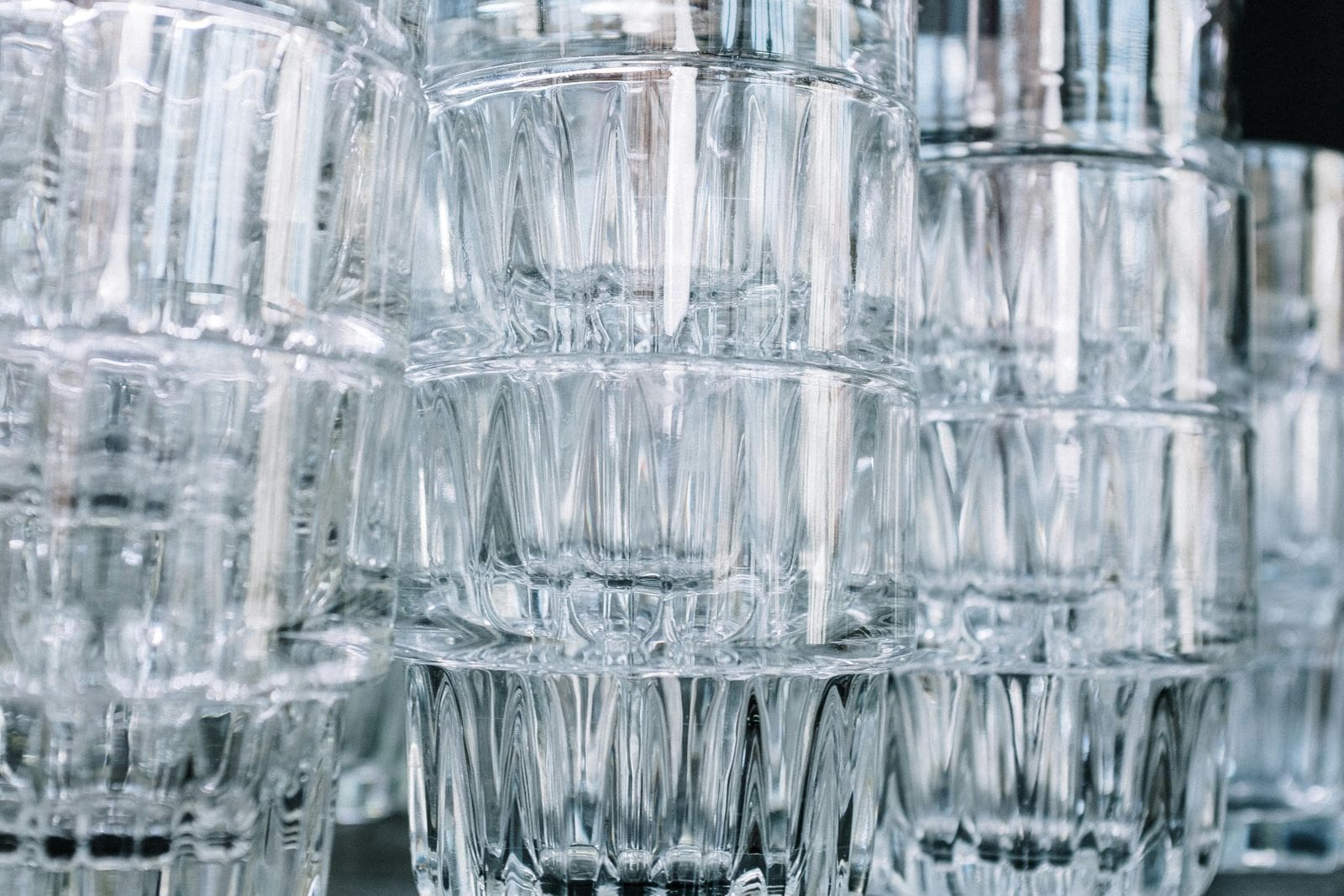
Freezing glass containers might seem straightforward, but there’s more to it than just placing them in the freezer. If you’ve been wondering, “Can you put glass in the freezer?” and want to ensure you do so safely, you’ll need to follow a few key steps. Proper preparation and awareness of how glass reacts to freezing temperatures can make all the difference. Here’s how you can safely freeze glass containers and avoid potential mishaps.
1. Choose the Right Type of Glass
The first step to safely freezing glass is to choose the right type of container. Not all glass is created equal when it comes to withstanding freezing temperatures. As mentioned earlier, tempered glass and borosilicate glass are the best options for freezing, while soda-lime glass is more likely to crack.
When choosing your containers, make sure they are explicitly labeled as freezer-safe. If the label doesn’t specify freezer use, it’s best to avoid it. To answer the question, “Can you put glass in the freezer?” always use glass that is built to endure cold temperatures, such as tempered or borosilicate glass. These materials are designed to resist thermal shock, which is essential for freezing.
2. Allow Containers to Cool Before Freezing
If you’ve been cooking and want to store your meal prep container, do not immediately place the container in the freezer. Glass that is too warm can easily crack or shatter when exposed to freezing temperatures. So, how can you safely freeze glass containers with hot food? Allow the food to cool down to room temperature before transferring it into your glass container.
Even if the glass container is freezer-safe, it’s important to let it adjust to room temperature gradually. If you place a hot container into a freezing environment, the glass may not be able to handle the rapid change in temperature, leading to breakage.
3. Leave Space for Liquid Expansion
When freezing liquids, like soups, sauces, or smoothies, make sure you leave enough room at the top of the container. Liquids expand as they freeze, and this expansion can put significant pressure on the glass if there’s no space to accommodate it. A container that’s too full can crack under this pressure.
If you’re asking, “Can you put glass in the freezer with liquids inside?” the answer is yes, but make sure to leave a bit of empty space for the liquid to expand. This is especially important for water-based foods, as they expand the most when frozen.
4. Avoid Rapid Temperature Changes
Rapid temperature changes are one of the primary causes of glass breakage. The stress caused by moving a glass container from one extreme temperature to another can be too much for it to handle. So, can you put glass in the freezer after taking it straight from the microwave? The answer is no. Always avoid placing hot glass directly in the freezer.
To prevent thermal shock, take your time when transferring the glass container. For example, you can place it in the fridge for a few hours to cool down first, then move it to the freezer. This gradual transition will reduce the risk of glass breakage.
5. Use Proper Lids and Avoid Overfilling
When freezing glass containers, it’s important to use the appropriate lid. A tight-fitting lid is essential to prevent air and moisture from entering the container, which can lead to freezer burn. However, make sure the lid isn’t too tight. If the contents expand, especially in liquid form, the pressure from a completely sealed container may cause it to crack.
Also, avoid overfilling the glass container. As mentioned earlier, leaving room for expansion is crucial. If you’re freezing solid foods, it’s still best not to fill the container all the way to the brim. A little breathing room goes a long way in protecting the glass.
6. Store Glass Containers on a Flat Surface
When placing glass containers in the freezer, always make sure they’re stored on a flat surface. Storing containers upright or in precarious positions can put unnecessary stress on certain areas of the glass, making it more susceptible to cracking.
To ensure the safest storage, organize your freezer so that glass containers are on a level shelf and are not at risk of being tipped over. The less movement in the freezer, the better your chances of keeping the glass intact.
7. Regularly Inspect Your Glass Containers
Even if you’re following all the safety steps, it’s a good idea to regularly check the condition of your glass containers. Over time, even the most durable glass can develop tiny cracks or chips that may not be immediately noticeable. These imperfections can weaken the glass, making it more likely to break during freezing.
Before placing any glass container back in the freezer, inspect it carefully for signs of wear. If you notice any cracks or chips, it’s better to replace the container before it causes a mess in your freezer.
Can You Put Glass in the Freezer with Hot Liquids?
Freezing hot liquids in glass containers might seem convenient, but it requires careful attention to avoid damaging the container or its contents. Below are detailed guidelines to address this question and ensure safety.
Glass is a material sensitive to temperature extremes. Rapid shifts in temperature can cause it to expand and contract unevenly, leading to cracks or even shattering. For this reason, placing a hot glass container directly into the freezer is risky. If you wonder, “can you put glass in the freezer with hot liquids?” the answer is generally no without proper precautions.
Why Sudden Cooling is Dangerous
When hot liquids are placed in a freezer, the outer surface of the glass cools much faster than the interior. This creates internal stress within the container. The greater the temperature difference, the more likely the glass will break. To avoid this, always allow the glass and its contents to cool gradually before freezing.
Steps to Safely Freeze Hot Liquids in Glass
- Cool Liquids First: Transfer hot liquids to a heat-resistant container and let them reach room temperature.
- Choose Freezer-Safe Glass: Use containers labeled as freezer-safe. These are designed to withstand temperature fluctuations better than regular glass.
- Leave Expansion Space: Liquids expand when frozen. Ensure at least one inch of space remains at the top of the container to prevent stress on the glass.
- Gradual Temperature Transition: Before freezing, place the container in the refrigerator for a few hours. This helps to bridge the temperature gap and reduces the risk of thermal shock.
Practical Considerations for Hot Liquids
If you frequently store soups, broths, or sauces, consider investing in tempered glass containers. These are stronger and more resistant to thermal changes. Additionally, avoid over-tightening lids, as this can trap pressure during freezing.
Addressing Common Concerns
Can you put glass in the freezer directly after pouring in hot liquids? Not safely. Immediate freezing introduces a high likelihood of breakage. By following the steps above, you can preserve your food and protect your glass containers from unnecessary damage.
By taking the proper precautions, you can confidently use glass containers for freezing without the risk of shattering or food loss. Remember, patience in cooling pays off in durability.
Alternatives to Glass for Freezing
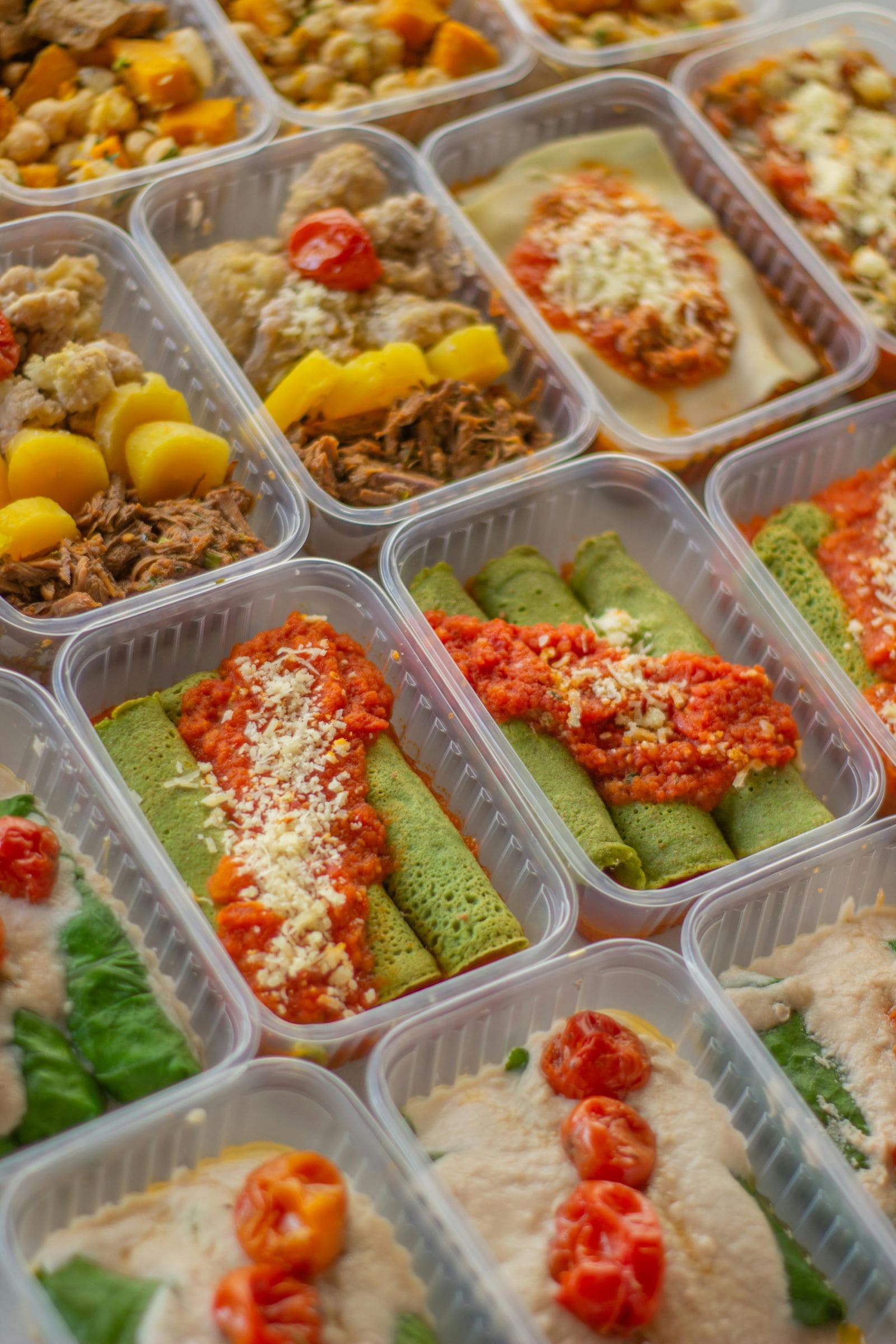
While glass containers are popular for freezing food, they are not always the best option. Several alternatives offer flexibility, durability, and safety. Below are some practical choices for storing food in the freezer.
Using Plastic Containers
Plastic containers are lightweight, shatter-resistant, and available in a wide range of sizes. When asking, “can you put glass in the freezer instead of plastic?” consider that plastic is less prone to cracking under temperature changes. Opt for BPA-free plastic containers to ensure food safety. They are particularly useful for items like soups or sauces, where the risk of expansion is high.
Benefits of Plastic Containers
- Durability: They can withstand accidental drops without breaking.
- Flexibility: Available in stackable designs to save freezer space.
- Cost-Effective: Typically more affordable than glass containers.
However, be cautious about using plastic for long-term storage, as it may absorb food odors over time.
Freezer Bags for Flexible Storage
Freezer bags are an excellent choice for freezing liquids, meats, and prepped ingredients. Their pliable material makes them space-efficient. When debating, “can you put glass in the freezer as easily as a freezer bag?” note that bags allow for a more flexible arrangement.
Advantages of Freezer Bags
- Space Efficiency: They conform to the shape of the contents, maximizing storage space.
- Ease of Use: Simple to seal and label.
- Portability: Lightweight and easy to handle.
Be sure to choose heavy-duty bags designed specifically for freezing to prevent leaks and freezer burn.
Silicone Storage Solutions
Silicone containers and bags have gained popularity as a reusable and eco-friendly alternative. They are versatile, durable, and capable of withstanding extreme temperatures. Unlike glass, silicone is less likely to crack or break under freezing conditions.
Why Choose Silicone?
- Reusability: Long-lasting and sustainable.
- Safety: Free from harmful chemicals like BPA.
- Versatility: Works well for both freezing and reheating.
While silicone products can be pricier, their durability often justifies the cost.
Aluminum Foil and Freezer Paper
For wrapping items like baked goods, aluminum foil and freezer paper are practical options. These materials provide an effective barrier against air and moisture, which helps preserve food quality. However, they are best suited for short-term storage.
Tips for Success
- Ensure a tight seal to prevent freezer burn.
- Label wrapped items clearly for easy identification.
- Combine with other storage options, like bags, for added protection.
Frequently Asked Questions
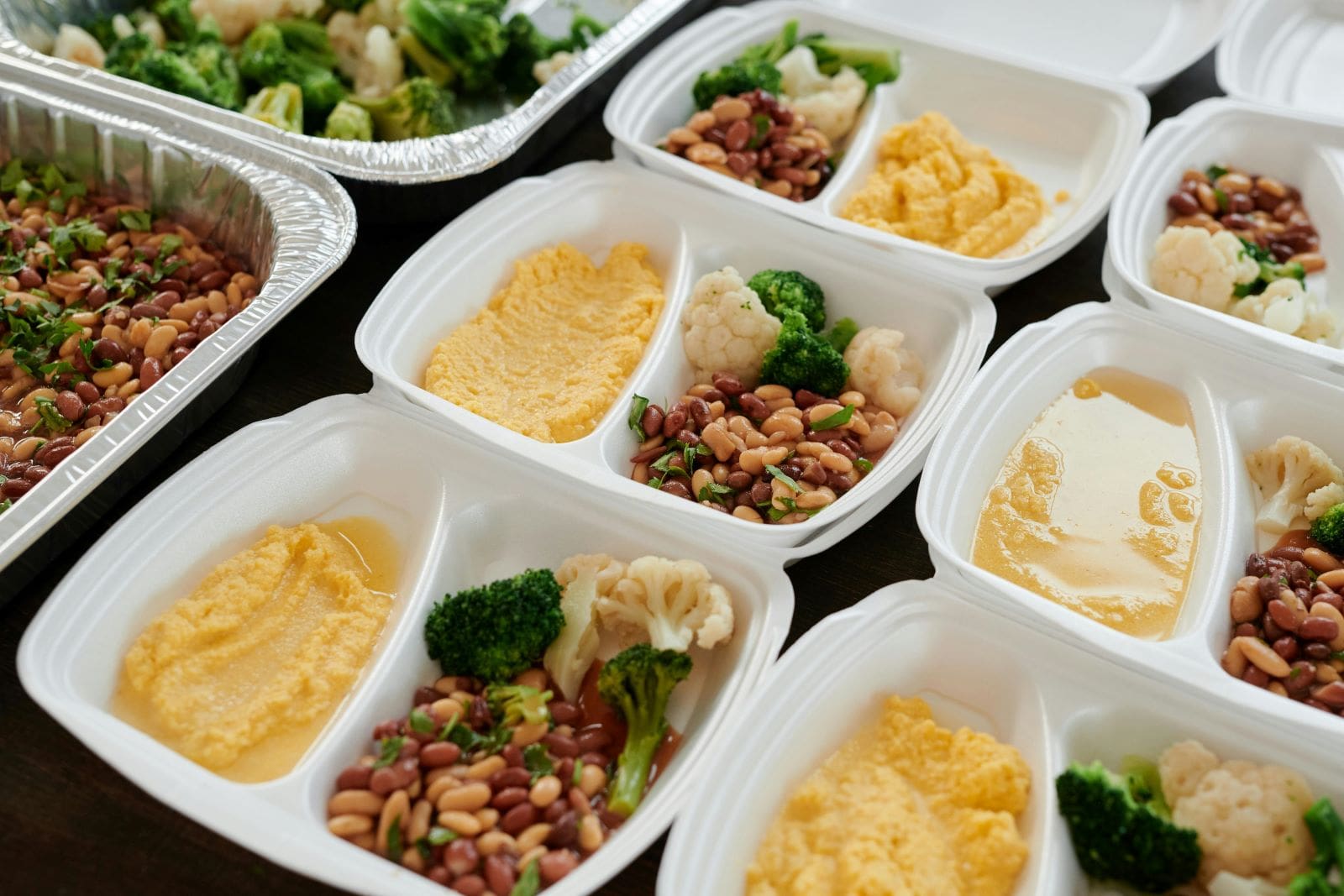
This section addresses common concerns and misconceptions about freezing glass containers and offers clear, practical advice.
Can You Put Glass in the Freezer Without Risk?
Yes, but only if proper precautions are taken. Glass is prone to cracking when exposed to rapid temperature changes or improper handling. Always ensure the container is freezer-safe, and allow hot contents to cool before placing them in the freezer. Gradual temperature adjustment is essential for avoiding thermal shock.
What Type of Glass is Best for Freezing?
Freezer-safe or tempered glass containers are the best choices. These are designed to withstand temperature extremes without breaking. Avoid decorative or non-tempered glass, which may be more fragile. If you’re asking, “can you put glass in the freezer safely?” the answer depends on using the right type of container.
How Do You Prevent Glass from Breaking in the Freezer?
Follow these steps to minimize the risk:
- Cool food to room temperature before transferring it to a glass container.
- Leave about an inch of headspace for liquids to expand.
- Transition containers through the refrigerator before placing them in the freezer.
These simple practices help protect your glass containers and their contents.
Are Plastic Lids Safe to Use with Freezer-Safe Glass?
Most plastic lids provided with freezer-safe glass containers are designed for freezing. However, ensure they are made from BPA-free materials. These lids help create a tight seal but should not be over-tightened to allow for expansion. If you’re unsure, check the manufacturer’s recommendations.
Can You Reheat Frozen Glass Containers?
Yes, but always thaw them gradually. Directly heating frozen glass can cause it to crack. For best results:This section addresses common concerns and misconceptions about freezing glass containers and offers clear, practical advice.
Can You Put Glass in the Freezer Without Risk?
Yes, but only if proper precautions are taken. Glass is prone to cracking when exposed to rapid temperature changes or improper handling. Always ensure the container is freezer-safe, and allow hot contents to cool before placing them in the freezer. Gradual temperature adjustment is essential for avoiding thermal shock.
What Type of Glass is Best for Freezing?
Freezer-safe or tempered glass containers are the best choices. These are designed to withstand temperature extremes without breaking. Avoid decorative or non-tempered glass, which may be more fragile. If you’re asking, “can you put glass in the freezer safely?” the answer depends on using the right type of container.
How Do You Prevent Glass from B
- Move the container to the refrigerator to thaw overnight.
- Allow it to reach room temperature before microwaving or heating.
- Avoid sudden shifts from freezer to high heat, such as placing the glass in a preheated oven.
How Long Can Glass Containers Be Stored in the Freezer?
The duration depends on the type of food and container. Generally, most foods can be stored safely for 3 to 6 months. Always label containers with dates to track storage time. Regularly inspect them for cracks, which can compromise food safety.
What Are the Benefits of Freezing in Glass?
Glass containers are eco-friendly, reusable, and do not absorb food odors or stains. They are ideal for maintaining food quality over extended periods. When asking, “can you put glass in the freezer instead of plastic?” consider that glass offers a sustainable and non-toxic alternative.
By understanding these frequently asked questions, you can use glass containers confidently and effectively for freezer storage.
Conclusion: Can You Put Glass in the Freezer?
Freezing food in glass containers can be a safe and sustainable choice when done correctly. However, it requires an understanding of the material’s limitations and proper techniques to avoid potential issues. Below, we summarize the key points to consider when using glass for freezing.
Glass is an excellent option for freezing because it is reusable, non-toxic, and eco-friendly. Unlike plastic, it does not absorb food odors or leach chemicals into your meals. If you are asking, “can you put glass in the freezer as a reliable alternative to plastic?” the answer is yes, provided you follow the recommended guidelines.
Precautions to Take Before Freezing
Before freezing, always ensure that your glass containers are labeled as freezer-safe. Avoid placing hot liquids or foods directly into the freezer without allowing them to cool first. Thermal shock is a primary concern, as glass can crack or shatter when exposed to sudden temperature changes.
Key Steps to Avoid Breakage:
- Allow hot food to reach room temperature before transferring it to the freezer.
- Use tempered glass containers that are designed for freezing.
- Leave space at the top of the container to account for the expansion of liquids.
- Transition containers through the refrigerator before moving them to the freezer.
Comparing Glass to Other Freezing Options
While glass is a sustainable choice, other materials like plastic, silicone, and freezer bags may be more practical for certain uses. For instance, flexible freezer bags are ideal for storing irregularly shaped items or liquids in small spaces. Silicone containers provide durability and versatility, making them a great alternative. Despite these options, many prefer glass for its ability to preserve food quality over time.
Glass is the best option when:
- For long-term storage of foods that benefit from an airtight seal.
- When you want to avoid using disposable or single-use materials.
- For reheating or baking directly from freezer to oven, using freezer-safe glass.
So, can you put glass in the freezer? Absolutely, as long as you take the necessary precautions. Glass containers provide a durable, eco-friendly, and food-safe solution for freezing. By understanding the material’s properties and following best practices, you can enjoy the benefits of glass storage without the risk of damage or food loss. Remember to handle glass with care and always prioritize freezer-safe options for the best results.
Amazon and the Amazon logo are trademarks of Amazon.com, Inc, or its affiliates.
